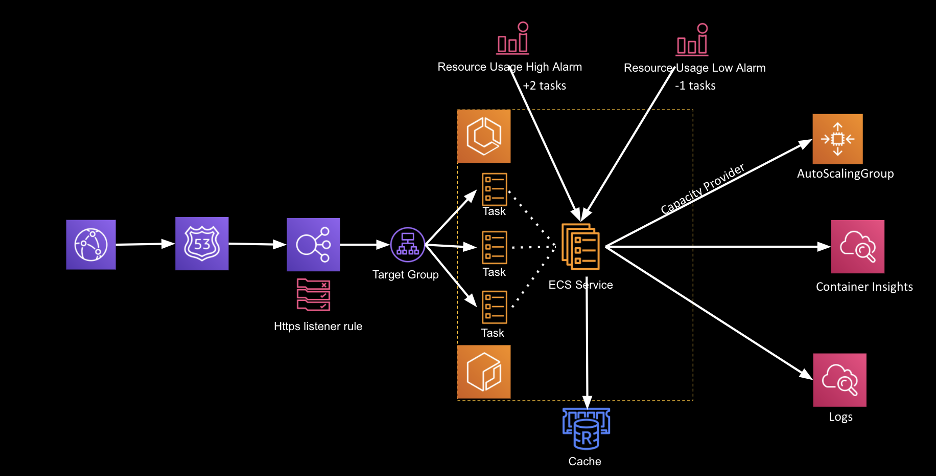Containers
Tag: Amazon ECS
Using Amazon FSx for Windows File Server as persistent storage on Windows Containers
This post has been updated due a recent launch. Designed for simplicity from the start, Amazon ECS delivers an AWS-opinionated solution for running containers at scale. Previously, customers had to implement a lengthy workaround (detailed in the original blog post below) in order to use an Amazon FSx for Windows File Server as persistent storage […]
Connecting services across multiple accounts using AWS App Mesh and Amazon ECS
NOTICE: October 04, 2024 – This post no longer reflects the best guidance for configuring a service mesh with Amazon ECS and its examples no longer work as shown. Please refer to newer content on Amazon ECS Service Connect. ——– Today, many customers are adopting microservices. This approach breaks down software from a a single […]
Domain reduces scaling time for their mobile API services with Amazon ECS
This post was contributed by Peter Kiem, Senior DevOps Engineer, Cloud Platform Team, Domain Group, Mitch Beaumont, Principal Solutions Architect, Large Enterprise, Container SME, and Mai Nishitani, Solutions Architect, Large Enterprise. Domain provides real estate information and services to Australians through mobile applications, the web, and newspapers. The company’s services include property […]
How to set Fluentd and Fluent Bit input parameters in FireLens
This post was contributed by Ben Anscombe, DevOps Engineer at Space Ape Games and Wesley Pettit, Software Engineer at AWS. September 8, 2021: Amazon Elasticsearch Service has been renamed to Amazon OpenSearch Service. See details. FireLens for Amazon Elastic Container Service (Amazon ECS) was launched last year to make it easy for ECS customers to […]
Optimizing Amazon Elastic Container Service for cost using scheduled scaling
Elasticity and cost have always been major factors in improving the operational efficiency of organizations, which in turn drives business transformation and agility. Elasticity is defined as the ability of the infrastructure (including application) to be able to seamlessly scale out and scale in based on the load. This is also called auto scaling. If […]
Developing an application based on multiple microservices using AWS Copilot and AWS Fargate
Introduction On July 9, 2020, we introduced AWS Copilot, a new command line interface (CLI) to build, release, and operate production ready containerized applications on Amazon Elastic Container Service (Amazon ECS) and AWS Fargate. In this post, we walk you through how to communicate between microservices with service discovery using AWS Copilot. You can also refer to […]
Automatically deploying your container application with AWS Copilot
Taking an application from idea to working implementation that people can interact with is a multistep process. Once the design is locked in and the code is written, the next challenge is how to deploy and deliver the application to users. One way to do this is using a Docker container and a tool like […]
Introducing Ingress support in AWS App Mesh
NOTICE: October 04, 2024 – This post no longer reflects the best guidance for configuring a service mesh with Amazon ECS and Amazon EKS, and its examples no longer work as shown. For workloads running on Amazon ECS, please refer to newer content on Amazon ECS Service Connect, and for workloads running on Amazon EKS, […]
AWS and Docker collaborate to simplify the developer experience
Developers can now use Docker Compose and Docker Desktop to deploy applications to Amazon ECS If you were to ask any developer who has worked with containers, you find out they have used or are aware of Docker Desktop and the Docker CLI for building applications on their desktop. They’ve also most likely used Docker […]
Accelerated model training and AI assisted annotation of medical images with the NVIDIA Clara Train application development framework on AWS
In May 2020, we released an AWS Quick Start that you can use to deploy a medical imaging model development environment on the AWS Cloud, with the NVIDIA Clara Train application framework. Numerous healthcare and life sciences customers, such as Philips and Cerner, trust AWS for their sensitive healthcare workloads. Secure, scalable cloud infrastructure enables […]







